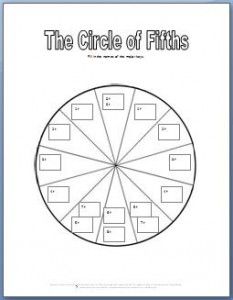Contents
The relationships between varied macroeconomic factors are extensively studied within the subject of macroeconomics. A macroeconomic issue might embody anything that influences the direction of a particular large-scale market. It describes how the economy as a whole functions and how the level of national income and employment is determined on the basis of aggregate demand and aggregate supply. It helps to achieve the goal of economic growth, a higher GDP level, and higher level of employment.
The three primary concerns of macroeconomic analysis are growth, unemployment and inflation (Rittenberg & Tregarthen, 2009). To understand why these are a concern, it needs to be understood the differences between microeconomics and macroeconomics. The Marshallian and Walrasian methods fall under the larger umbrella of neoclassical microeconomics. Neoclassical economics focuses on how consumers and producers make rational choices to maximize their economic well being, subject to the constraints of how much income and resources they have available. Microeconomics can be applied in a positive or normative sense. Positive microeconomics describes economic behavior and explains what to expect if certain conditions change.
Substitute ProductsAny alternative, replacement, or backup of a primary product in the market is referred to as a substitute product. It refers to any commodity or combination of goods that might be used in place of a more popular item in normal circumstances without affecting the composition, appearance, or utility. Demand CurveDemand Curve is a graphical representation of the relationship between the prices of goods and demand quantity and is usually inversely proportionate. It determines the law of demand i.e. as the price increases, demand decreases keeping all other things equal. Say Sandra plans to buy a car and selects an SUV over a hatchback, then Sandra bears the opportunity cost of not choosing a hatchback. Opportunity CostThe difference between the chosen plan of action and the next best plan is known as the opportunity cost.

He has more than 30 years of statistics experience including teaching, research, writing, and consulting. Peter teaches and performs statistical research with a focus on advanced statistical https://1investing.in/ methods, regression analysis, multivariate analysis, mathematical statistics, and data mining. He specializes in using statistics in investing, technical analysis, and trading.
THE 17 GOALS
Microeconomics focuses on the study of individual markets, sectors, or industries as opposed to the national economy as whole, which is studied in macroeconomics. Microeconomics is the social science that studies the implications of incentives and decisions, specifically about how those affect the utilization and distribution of resources. Generally speaking, microeconomics provides a more complete and detailed understanding than macroeconomics. Microeconomics is a more defined stream that focuses on the demand and supply of a specific segment or market influenced by the behavior of people and business entities. In contrast, macroeconomics studies a nation’s overall economy and the effect of factors like inflation, recession, aggregate demand, employment, and national output. Macroeconomics studies economy-extensive phenomena such asinflation, price levels, rate of economic growth, national income, gross home product , and modifications in unemployment.

If a manufacturer raises the prices of cars, positive microeconomics says consumers will tend to buy fewer than before. If a major copper mine collapses in South America, the price of copper will tend to increase, because supply is restricted. Positive microeconomics could help an investor see why Apple Inc. stock prices might fall if consumers buy fewer iPhones.
Economic FactorsEconomic factors are external, environmental factors that influence business performance, such as interest rates, inflation, unemployment, and economic growth, among others. It is a narrower concept that focuses only on a single market or segment. The study states that the market attains equilibrium when the supply of goods controls the demand. Even though opportunity cost may be difficult to quantify, the effect of opportunity is general and actual on the independent level.
Is opportunity costs a microeconomics example?
Econometrics is defined as use of statistical tools for assessing economic theories by empirically measuring relationship between economic variables. The key of Managerial Economics is the micro-economic theory of the firm. It lessens the gap between economics in theory and economics in practice. The four essential economic activities are resource management, the production of goods and services, the distribution of goods and services, and the consumption of goods and services.
S known that all businesses and firms are following rational decision-making, Therefore it will create a profit-maximizing output. The demand for different items by independents is normally though of as the results of a utility-maximizing process. The explanation of this connection between the price and the quantity demanded of a given good is that, given all other goods and restrictions, this collection of choices is that one which satisfies the consumer.
The objective of microeconomic theory is to analyse how individual decision-makers, both consumers and producers, behave in a variety of economic environments. Take into consideration that the opportunity cost is not the total of the present alternatives, but it is the benefit of one alternative only. The correct opportunity cost would be the forgone profit of the most moneymaking of those listed.
By not manufacturing at all, the company loses only its fixed cost. So it has a choice to exit the market or remain in the market and have risk of complete loss. It occurs when its goals of microeconomics average total cost is less than the price of each extra product at the profit maximizing output. T acquire a priori that markets are better to other forms of social company.
- Adam Smith is a Scottish political economist, author, and philosopher.
- In microeconomics, it applies to price and output determination for a market with perfect competition, which includes the condition of no buyers or sellers large enough to have price-setting power.
- On the supply side of the market, some factors of production are described as variable in the short run, which affects the cost of changing output levels.
- Production theory is the study of production, or the economic process of converting inputs into outputs.
These two may be called the key indicators of health of an economy. In other words, modern governments aim at reducing both unemployment and inflation rates. It suffices here to note that supply-side policies are designed to cause rightward shifts in the supply curves in various individual markets.
Individual actors are often grouped into microeconomic subgroups, such as buyers, sellers, and business owners. These groups create the supply and demand for resources, using money and interest rates as a pricing mechanism for coordination. Price discrimination in airline tickets is a real-life example of microeconomics. The airline industry uses price discrimination and dynamic pricing techniques while setting prices for tickets. Both of these strategies are affected by microeconomic factors.
Opportunity cost
Perfect competition is a situation in which numerous small firms producing identical products compete against each other in a given industry. Perfect competition leads to firms producing the socially optimal output level at the minimum possible cost per unit. A good example would be that of digital marketplaces, such as eBay, on which many different sellers sell similar products to many different buyers. Consumers in a perfect competitive market have perfect knowledge about the products that are being sold in this market.
This results in a shortage or excess supply and inefficient pricing of the goods. Complete market failure means that there are no goods supplied in the market at all. Subsidies are financial support to products with positive externalities.

Demand-and-provide evaluation is used to elucidate the behaviour of perfectly competitive markets, however as a regular of comparability it can be prolonged to any type of market. Microeconomics additionally deals with the results of economic policies on microeconomic behavior and thus on the aforementioned elements of the economy. Particularly within the wake of the Lucas critique, much of modern macroeconomic theories has been constructed upon microfoundations—i.e.
Monopolistic competition
In a competitive labour market for example the quantity of labour employed and the price of labour depends on the demand for labour and supply of labour . Microeconomics is a subdivision of economics that studies how people, firms and households decide on how to allocate their limited resources in the markets. Microeconomics analyzes how the decisions made affect demand and supply for goods and services, which in turn affect market prices.
Other applications of demand and supply embrace the distribution of revenue among the components of production, including labour and capital, through issue markets. In a competitive labour market for example the quantity of labour employed and the value of labour is determined by the demand for labour and supply of labour . On the supply side of the market, some factors of production are described as variable in the short run, which affects the cost of changing output levels.
Almost 6.6 million of the UK workers are part of trade unions like Unison trade union, Unite the Union, and GMB. Their main function is to fight for the rights of employees and oppose employers’ malpractices. Trade unions also demand pay raises and other benefits like pension, bonuses, or retirement schemes. Unison’s latest campaign ‘One team for patient care’ had the objective of recognizing the combined efforts of all NHS staff during the Covid-19 pandemic. Nowadays, many consumers are moving towards price leaders such as Aldi and Lidl proving that branding is not as important as pricing in the retail industry. He government protects employees and suppliers from abuse of monopoly powers by nationalization, employment legislation, and legal codes and practices for suppliers.
Other factors can change demand; for example an increase in income will shift the demand curve for a standard good outward relative to the origin, as in the figure. In a perfectly aggressive market, supply and demand equate marginal value and marginal utility at equilibrium. Positive macroeconomic components include occasions that subsequently foster prosperity and financial progress, inside a single nation or a gaggle of countries. For instance, a lower in gasoline costs inside the United States might drive shoppers to buy more retail goods and companies. One of the principle targets of microeconomics is to evaluate the methods that markets use to choose the relative prices among goods and providers, and allocating scarce resources to many different uses.
Keynesian economics comprise a theory of total spending in the economy and its effects on output and inflation, as developed by John Maynard Keynes. Yes, macroeconomic factors can have a significant influence on your investment portfolio. John Maynard Keynesis often credited as the founder of macroeconomics, as he initiated the use of monetary aggregates to study broad phenomena. Some economists dispute his theories, while many Keynesians disagree on how to interpret his work. Apart from the apparently rational factors which seek to explain the buying behaviors, there are a slew of factors which influence the end consumers’ buying decisions which are rather abstract. Convenience, brand loyalty, EMI options and marketing initiatives can have a great influence on the buying behavior of consumers.
Market structures: competition and monopoly
Production theory is the study of production, or the economic process of converting inputs into outputs. Production uses resources to create a good or service that is suitable for use, gift-giving in a gift economy, or exchange in a market economy. This can include manufacturing, storing, shipping, and packaging.
